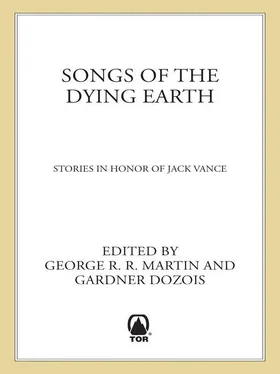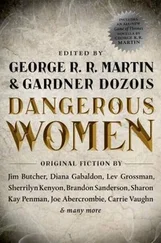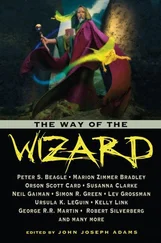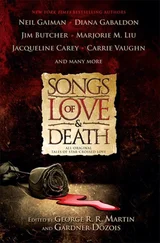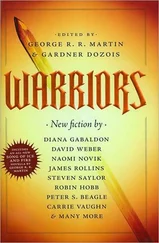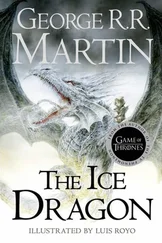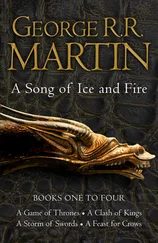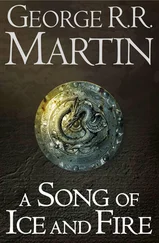Evillo stood nonplussed. Had his good luck returned? He grasped also that certain powers belonging to the arrogant Khiss had indeed been given to him. Released from Khiss’ personalized Equivalence, Evillo might surely now enjoy them. And not least as heir to white-walled Kaiin.
While he was considering these prospects, he saw amid the crowd the Darkographer Kaiine. Evillo recalled how he had misunderstood the gallant’s warning — not to avoid stepping upon the snail, but simply to avoid the snail altogether.
So easily might one topple into folly. One must have things straight.
He therefore at once asked Kandive, “And is my name Evillo, as I have thought from the age of seven?”
“Not at all,” replied the puzzled Kandive. “By the cyclopaedia, whatever put such an idea in your head?
“What then, sir, is my name?”
“Why, my boy, hear, and thereafter bear with pride your true cognomen, written in the archives of Ascolais. It is Blurkel.”
Evillo staggered. Supposing this due to rapture, Kandive clapped him on the back.
But it was the full weight of the strident three-fold curse of Pendatas Baard, coming home to roost. Vented upon him in the name of Blurkel, the young man felt it attach itself like a swarm of stones.
That very night, as all feasted in the lavish courts of Kandive, the recurrent leucomorph uncharacteristically dropped from a chandelier upon Blurkel. Its attack had been much refined by practice.

Afterword:
For me, Jack Vance is one of the literary gods.
In the earliest ’70’s, when I was in a very unhappy and depressed condition, my magical, wise mother, (who had already turned me on to mythology, history, and SF), bought me Jack Vance’s The Dying Earth . At once I escaped my leaden state and entered the teeming and ironically shining landscape of Vance’s extraordinary, decadently future world.
I still possess this volume — the English Mayflower edition — treasured and often read, though by now its pages are pale brown and many are loose inside the cover. (The spine seems to have been nibbled by a pelgrane).
The Dying Earth novels and stories are picaresque adventures in the truest sense, peripatetic, and express-paced. They carry echoes not only of the Thousand Nights and a Night , but of such other witty sombre epics as Gulliver’s Travels , not to mention the visions of Milton and Blake. Vance seems genuinely, within the fantasy-SF envelope, to access the Mediaeval mind: here the world may end at any moment and fabulous beasts and monsters coexist with sinful, selfish, and (rarely) spiritual man. The narratives range from the screamingly hilarious to the seductively beautiful, to the shockingly — if fastidiously presented — violent. As for black humour, Vance might have invented it.
Such masterworks have fired and — I hope — taught my imagination, ever since the first plunge. Influence is too small a word. What I owe to Vance’s genius, as avid fan and compulsive writer; is beyond calculation.
Every book reasserts its peerless magic on every one of the uncountable times I re-re-read it. In fact, I don’t quite believe Jack Vance invented the Dying Earth. Part of me knows he’s been there. Often.
But then. He takes us there too, doesn’t he?
— Tanith Lee
Dan Simmons
THE GUIDING NOSE OF ULFÄNT BANDERŌZ
A writer of considerable power, range, and ambition, an eclectic talent not willing to be restricted to any one genre, Dan Simmons sold his first story to The Twilight Zone Magazine in 1982. By the end of that decade, he had become one of the most popular and bestselling authors in both the horror and the science fiction genres, winning, for instance, both the Hugo Award for his epic science fiction novel Hyperion and the Bram Stoker Award for his huge horror novel Carrion Comfort in the same year , 1990. He’s gone on to win two more Bram Stoker Awards and two World Fantasy Awards (for Song of Kali and “This Year’s Class Picture”). He has continued to split his output since between science fiction ( The Fall of Hyperion, The Hollow Man, Endymion, The Rise of Endymion, Ilium, Olympos ) and horror ( Song of Kali, Summer of Night, Children of the Night …although a few of his novels are downright unclassifiable ( Phases of Gravity , for instance, which is a straight literary novel, although it was published as part of a science fiction line), and some (like Children of the Night ) could be legitimately considered to be either science fiction or horror, depending on how you squint at them. Similarly, his first collection, Prayers to Broken Stones , contains a mix of science fiction, fantasy, horror, and “mainstream” stories, as do his more recent collections, Lovedeath and Worlds Enough and Time: Five Tales of Speculative Fiction . Many of his recent books confirm his reputation for unpredictability, including The Crook Factory , a spy thriller set in World War II and starring Ernest Hemingway, Darwin’s Blade , a “statistical thriller” halfway between mystery and dark comedy, Hardcase, Hard Freeze , and Hard As Nails , hardboiled detective novels, and, A Winter Haunting , a ghost story. His most recent books are the bestselling novel, halfway between historical and horror, The Terror , the chapbook novella, Muse of Fire , and a major new novel about Charles Dickens, Drood . Born in Peoria, Illinois, Simmons now lives with his family in Colorado.
In the complex and richly imagined story that follows, he takes us on a race across unknown territory to the very ends of the Dying Earth, with terrible enemies in close pursuit and the fate of all who live at stake, and everything depending on the guidance of…a nose?
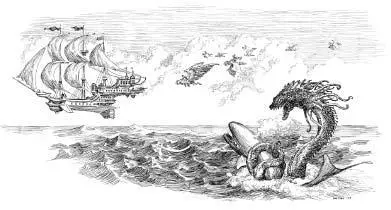
In the waning millennia of the 21 stAeon, during one of the countless unnamed and chaotic latter eras of the Dying Earth, all the usual signs of imminent doom suddenly went from bad to worse.
The great red sun, always slow to rise, became more sluggish than ever. Like an old man loathe to get out of bed, the bloated sun on some mornings shook, quivered, staggered, and rippled forth earthquakes of protesting rumbles that radiated west from the eastern horizons across the ancient continents, shaking even the low mountain ranges worn down by time and gravity until they resembled old molars. Black spots poxed and repoxed the slowly rising sun’s dim face until entire days were all but lost to a dull, maroon twilight.
During the usually self-indulgent and festival-filled month of Spoorn, there were five days of near total darkness, and crops failed from Ascolais through Almery to the far fen borders of the Ide of Kauchique. River Scaum in Ascolais turned to ice on the morn of MidSummer’s Eve, freezing the holy aspirations off thousands who had immersed themselves for the Scaumish Rites of Multiple Erotic Connections. What few ancient upright stones and wall-slabs that were still standing at the Land of the Falling Wall rattled like bones in a cup and fell, killing countless lazy peasants who had foolishly built their hovels in its lee over the millennia just to save the cost of a fourth wall. In the holy city of Erze Damath, thousands of pelgranes — arriving in flocks the size of which had never been seen before in the memory of man and non-men — circled for three days and then swooped down, carrying off more than six hundred of the most pious pilgrims and befouling the Black Obelisk with their bone-filled droppings.
Читать дальше
